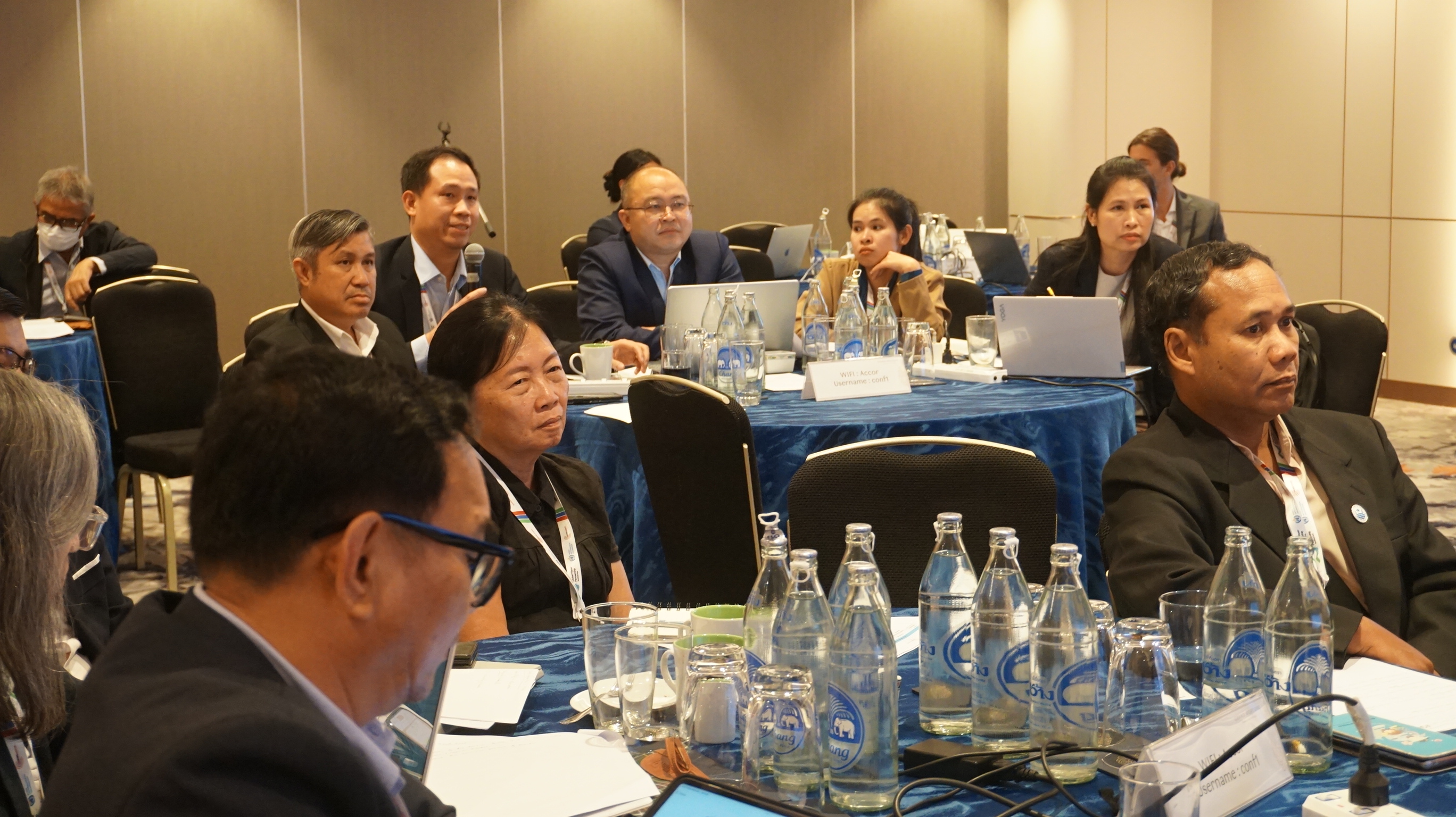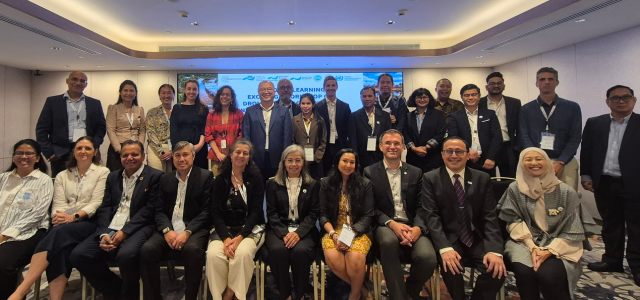For countries like Cambodia and Lao PDR, the effects of climate change are no longer distant threat - they’re daily realities. Unpredictable water patterns are disrupting agriculture, livelihoods, and natural resources, making adaptation an urgent priority . The Regional Learning Exchange Workshop was designed specifically to address this challenge. By focusing on Integrated Water Resources Management (IWRM) and drought action planning, the workshop aimed to equip countries with the tools and frameworks needed to enhance resilience, optimize water resources, protect vulnerable communities, and foster collaboration.
The event was organized by a coalition of global and regional partners: the World Meteorological Organization (WMO), the Global Water Partnership (GWP), Global Water Partnership Southeast Asia (GWP-SEA), GWP Cambodia, and GWP Lao PDR. The workshop convened 30 participants from various sectors, including government representatives from Cambodia and Lao PDR, climate service experts, regional organizations, and UN agencies Regional Asia Pacific agenices, and development partners such as the UN Environment Programme, Food and Agriculture Organization (FAO) , Asian Development Bank (ADB), International Union for Conservation of Nature (IUCN), Resilience Development Initiative (RDI), UN Convention to Combat Desertification, Asian Disaster Preparedness Center (ADPC), United Nations Office for Disaster Risk Reduction (UNDRR), Centre de coopération internationale en recherche agronomique pour le développement (CIRAD) – Stockholm Environment Institute-AIT, the World Bank, United Nations Economic and Social Commission for Asia and the Pacific (UN ESCAP), United Nations Global Compact.
 For two intense days, the participants delved into a series of presentations, discussions, and practical sessions. The central focus was on sharing lessons learned from the development of IWRM and drought action plans in both Cambodia and Lao PDR. The event also offered a platform to explore how these frameworks can be implemented effectively, with a special emphasis on financing strategies and regional cooperation.
For two intense days, the participants delved into a series of presentations, discussions, and practical sessions. The central focus was on sharing lessons learned from the development of IWRM and drought action plans in both Cambodia and Lao PDR. The event also offered a platform to explore how these frameworks can be implemented effectively, with a special emphasis on financing strategies and regional cooperation.
The workshop included a “case clinic” session, where Cambodia and Lao PDR showcased their action plans and reflected on the challenges and successes they encountered during the process.Through this session, the attendees began to connect the dots on how best to implement these plans on the ground, ensuring they’re not just theoretical documents, but living, actionable tools.
“We are currently studying and investing in understanding drought, which is why I say it’s an important step. Of course, we aim to contribute to my country (Cambodia) by supporting national development through improved laws, assessments, and measures for the government.” - Dr Seth Vannareth (Permanent Representative of Cambodia with WMO and Adviser to the Ministry of Water Resources and Meteorology (MOWRAM) Cambodia).
Another key moment was the introduction of SDG 6 Support Programme also stage 3 IWRM action plan implementation, International Drought Management Programme (IDMP) and the Communities of Practice of IWRM and IDMP. These regional platforms were presented as invaluable resources for countries looking to deepen their collaboration on drought management and water resources management, helping participants understand how they can benefit from joining these networks.
The workshop was not just about learning—it was about action and collaboration. By equipping Cambodia and Lao PDR with the necessary tools to develop and implement effective water management and drought action plans, the workshop lays the groundwork for a future where these nations are better prepared to face the growing climate challenges. Through stronger institutional capacities and closer regional collaboration. Both countries are keen to welcome collaboration and turn the action plan into concrete implementation.
“Through IWRM planning, I’ve learned how to develop an action plan. It’s not an easy task and requires involvement from various sectors. When it comes to drought, it’s not only the responsibility of the government—private sectors also need to be involved in the process.”- Bounteum Sysouphanthavong (Deputy Director General Department of Meteorology and Hydrology, Lao PDR).
Overall, this workshop represents a critical milestone in Southeast Asia’s journey toward climate resilience. With the support of regional and international partners, the hope is that the momentum created here will continue to drive sustainable solutions and action plan implementation. As countries work together, share knowledge, and implement their water and drought management action plans, Southeast Asia can look toward a more water-secure future, with communities better prepared to face the challenges of a changing climate. Southeast Asia will be better equipped to tackle future water crises together.
